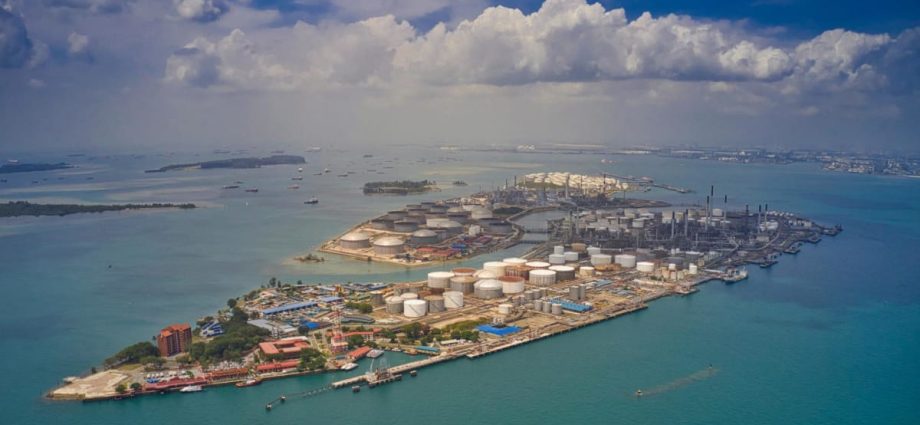
SINGAPORE: On July 26, 1961, a sprawling industrial complex marked by a maze of steel pipes and towering chimneys was declared open on Pulau Bukom, an island located 5km south of Singapore.
Completed in slightly over a year, the S$30-million oil refinery by European energy firm Shell was Singapore’s first such facility. It was also a much-needed investment for the small island nation that achieved self-governance just two years before and was pursuing rapid industrialisation to create jobs.
“It is a significant landmark in our industrialisation programme,” said then-Finance Minister Goh Keng Swee at the opening attended by officials and company representatives.
More oil and gas companies followed in the footsteps of Shell, setting up refineries on neighbouring small islands that later merged and became Jurong Island, a dedicated energy and chemicals park.
Operating round the clock, these plants, with their flames at times casting an orange glow in the night sky, turned crude oil into gasoline, diesel and other products which were sold to different parts of the world.
Together, they fired up a new sector that grew into a cornerstone of the Singapore economy, as well as cemented the country’s position as one of the world’s top energy and chemicals hubs.
Back in Pulau Bukom, the Shell refinery was expanded in size over the decades, processing as much as 500,000 barrels per day of oil at its peak. The plant also levelled up to manufacture petrochemicals such as ethylene, making it Shell’s only wholly owned refining and petrochemicals facility in Asia.
But the future of this historical facility now appears to be up in the air, as Shell announced in June a strategic review of its assets on Pulau Bukom and a petrochemical facility on Jurong Island.
This comes on the heels of the company’s decision earlier this year to drop two projects on biofuels and base oil production in Singapore, as well as an announcement in 2020 to halve processing capacity and cut jobs at the Pulau Bukom refinery.
Replying to queries from CNA, the energy giant reiterated an earlier statement that the latest review is done in response to the ongoing “high grading journey” of its chemicals and products portfolio, current challenging market conditions and enhanced capital discipline.
“Our strategic review is ongoing and we are exploring several options including divestment,” it said.
Given its history and huge presence in Singapore, Shell’s latest move has “great significance” for the local energy and chemical sector, said Mr Leow Foon Lee, visiting senior research fellow at the National University of Singapore’s (NUS) Energy Studies Institute.
Other players could embark on similar reviews of their local operations, as they contemplate how to maintain profitability in an era of extreme commodity price volatility, looming uncertainties in the global economy, oversupply in the market and the transition to a low-carbon world, industry experts told CNA.
In particular, energy transition forms the biggest pressure on the industry, which is traditionally carbon-intensive, to find ways to reduce their own carbon footprint while remaining economically viable.
Official figures showed the energy and chemicals sector contributed around three per cent of Singapore’s gross domestic product (GDP) and one-fifth of the country’s total manufacturing output in 2020. Overall, the sector employs more than 27,000 people.
On Jurong Island, more than 100 energy, petrochemical and specialty chemicals firms are up and running, operating an integrated mix of refining and petrochemicals production.
Amid the headwinds, what lies ahead for Singapore’s energy and chemicals sector?

